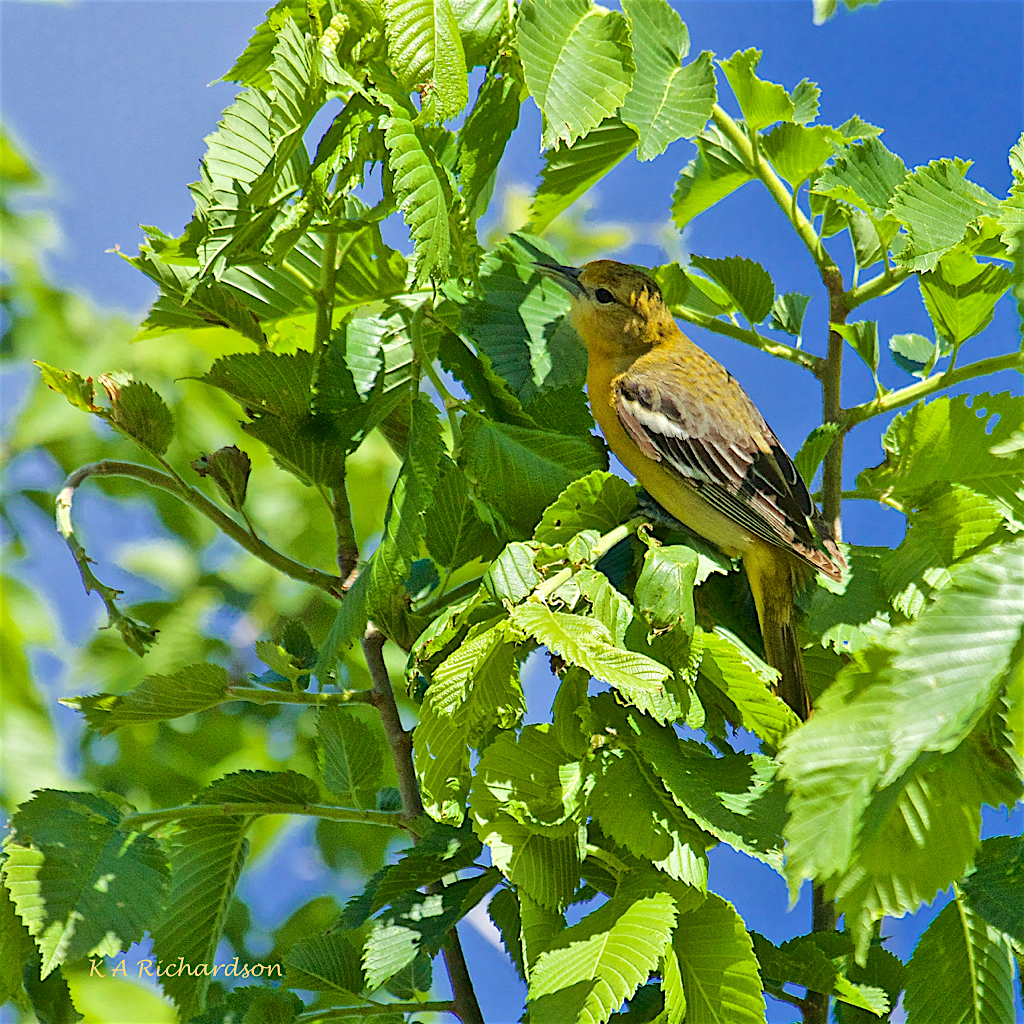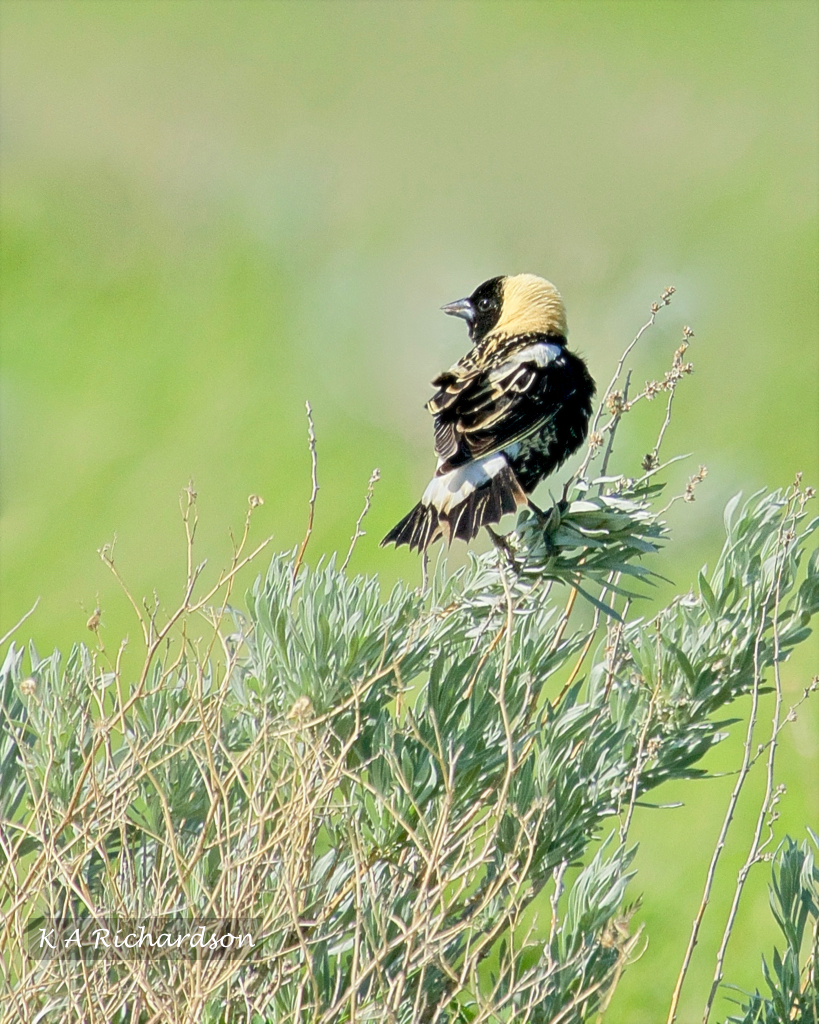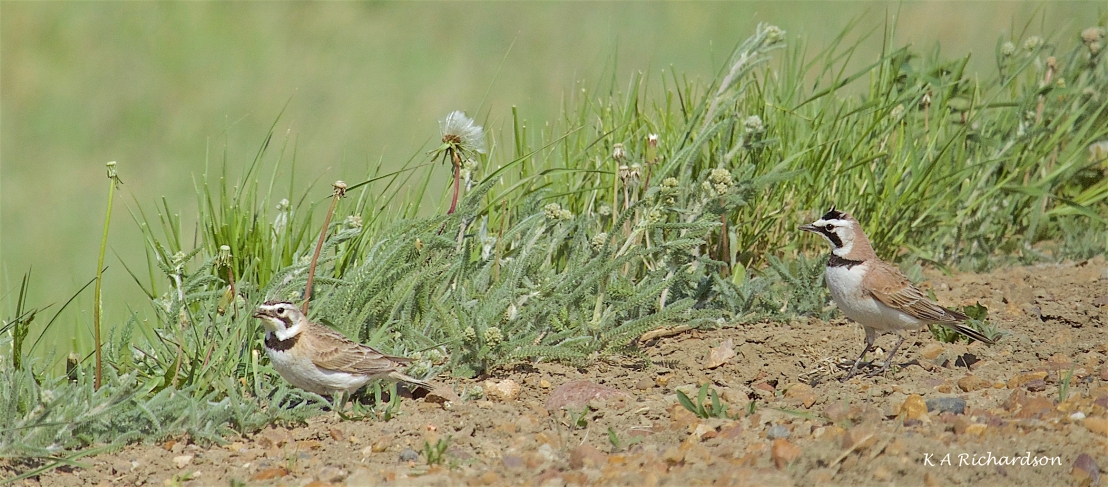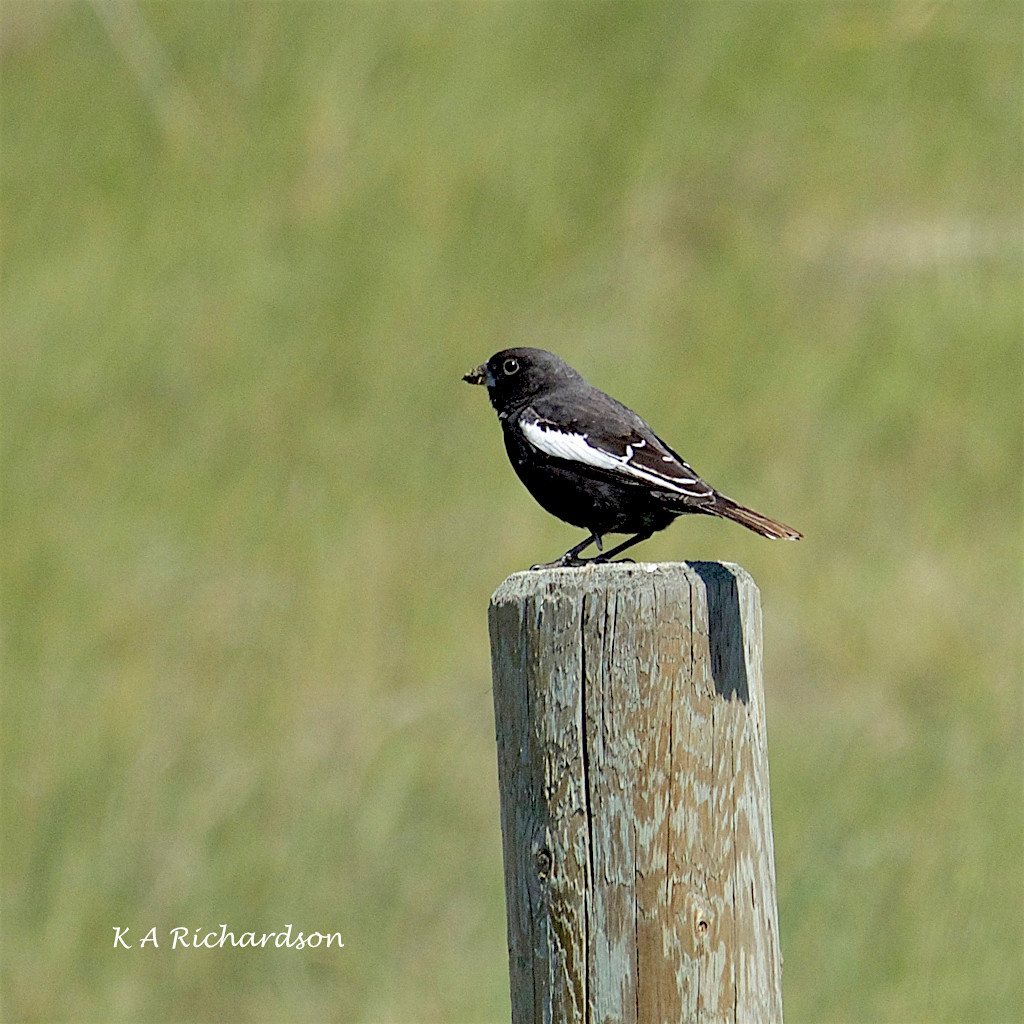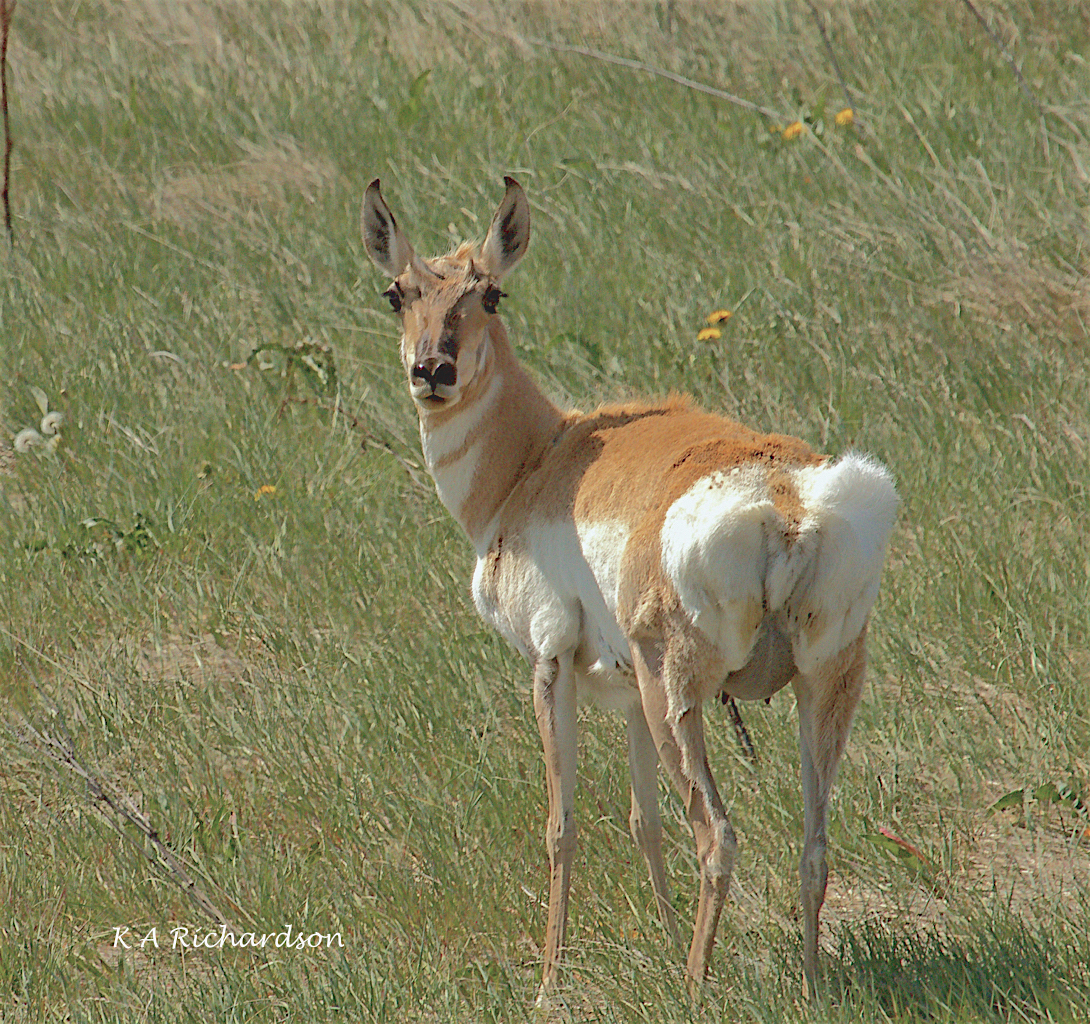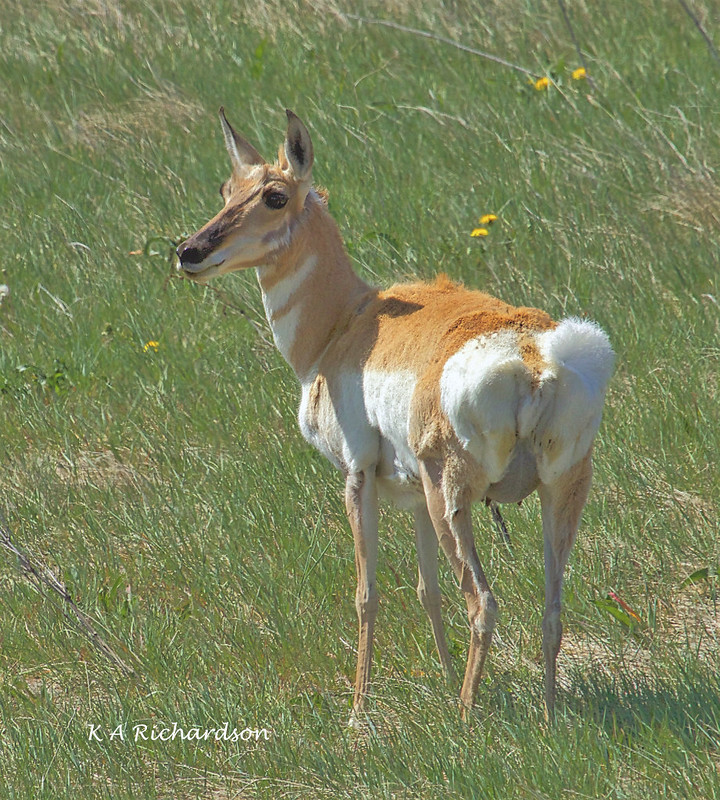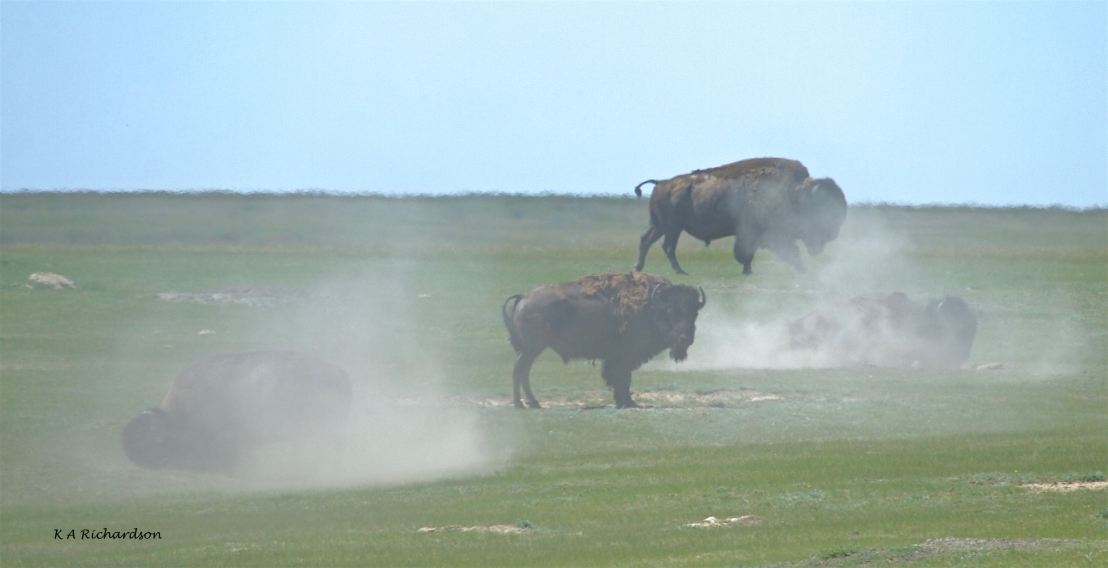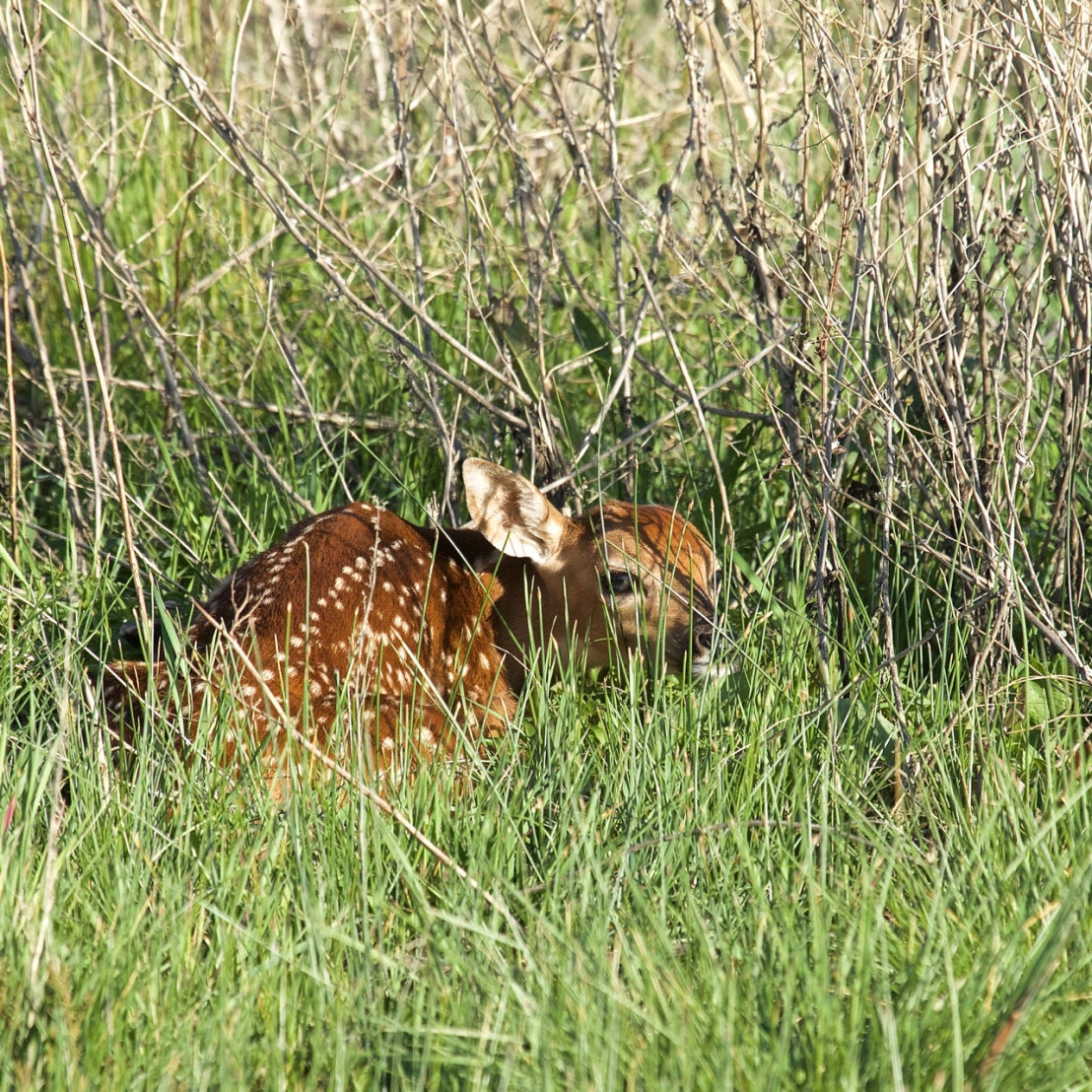While we were visiting Grasslands National Park, we stayed in Val Marie at The Convent Inn, a fabulous, unpretentious bed and breakfast/inn, which we had learned about from a fellow birder/photographer from Vancouver, Debra Herst.

We greatly enjoyed our visit and are extremely grateful to Debra! Ironically, although we knew that she was travelling to Winnipeg a week or so ahead of us, we were greatly surprised to see her at breakfast on our third day. Turns out we had just missed each other, the afternoon before, at Two Trees, a small park-within-the-Park just southeast of Val Marie. We had seen Barn Swallows, Bobolinks and few other familiar birds there, but had completely missed some of the ones Debra had found, including a Great Horned Owl with two ready-to-fledge offspring. Debra gave us precise instructions on where to find them, and we shared where we had seen Chestnut-collared Longspurs the previous evening — on a route that she might have bypassed. She ended up getting great CCLO shots that day on her way west while we returned to Two Trees for one of best days of birding on our entire trip! You can see some of other birds we photographed on the previous post — Part 5….
It was the GHOWs, however, that were, among many great moments, the most memorable! Here are some shots that illustrate why:

(No photographers — or birds — were injured in the making of these visuals.)
What made this find so special? After all, we see Great Horned Owls frequently at home, Not long before we left, I photographed a mother and owlet at the golf course where my eldest son works. This, however, was the first time I’d seen an owlet on the ground.
When we found the pair of youngsters, they were both well up in branches of separate trees. One was more hidden. After getting some decent shots of the more open bird, and of the mother some distance away in a dead tree, I wandered off following some of the song birds that had made themselves noticeable (see previous post — part 5). Nana, however, stayed nearer the owls’ habitat at the west end of park.


Several minutes passed as I pursued orioles, a thrasher, and an unidentified warbler, (later ID’d as a juvenile Blackpoll). Soon Nana and I were at opposite ends of the park. Then I noticed her beckoning, rather seriously, for me to come back to where she was. She was quite concerned about Henry who had somehow managed to find the grass. Whether he had fallen, or was testing his flying skills, we don’t know. He did not seem injured, but he had clearly become vulnerable. While we didn’t want to harass him, or interfere with Nature’s plan, I did want to use my telephoto to capture the moment. Nana used her iPhone to make a short video. And here are the photos:



Nana was quite worried about the little guy, especially when he took to running, well, waddling, around, and once when he tried to slip outside the enclosing hedge and into the open grasslands, I helped turn him back into the trees and waited. Eventually, he discovered that, to some extent at least, he could make his way back up into trees. Here, he climbs a snag:

When we left, we trusted that Nature would take care of everything as Nature does. Perhaps owls are raised here every year. If you’re out that way in May, you might want to have a look. We’re certainly going to remember our experience for as long as we have memory!



